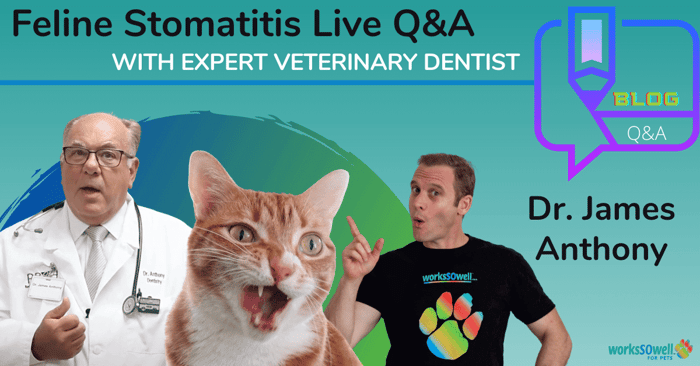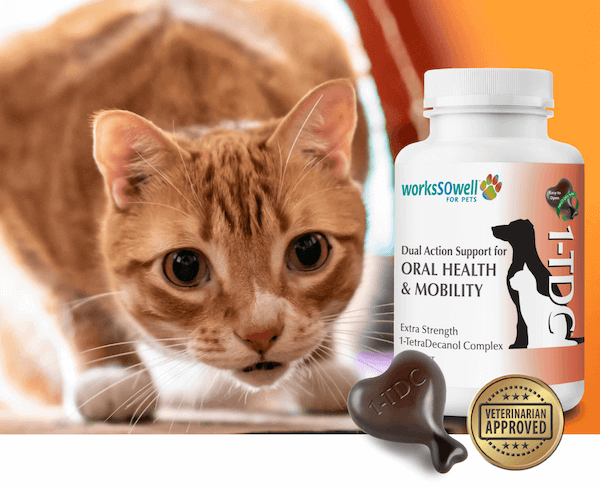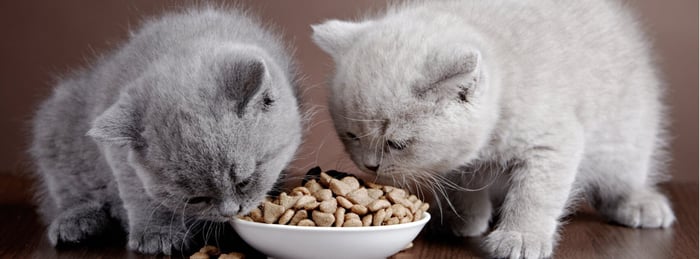We know that so many cats suffer from feline stomatitis. With so much information out there, it’s hard to know what to believe. That’s why veterinary dentist (and our Chief Medical Officer) Dr. James Anthony has agreed to answer your questions in an interactive Q&A session.
Click below to watch the full Q/A video
What is Stomatitis?
- This disease has been given many different names, the most common of which is Feline Gingivitis Stomatitis Syndrome. However, there are probably about 16 names affiliated with it. We do not know exactly what is going on, but we do have lots of ideas. Better treatments are being developed all the time, but we do not understand the full pathophysiology of this syndrome.
- Stomatitis is a catch-all phrase for several syndromes. Sometimes we have caudal stomatitis, which only affects the back of the mouth. Then, there is full oral stomatitis which is much more advanced. Juvenile stomatitis only affects younger animals. And there are many more.
- The severe redness in the oral cavity is many times associated with ulcers and fissures that are extremely painful for cats. This is what is debilitating for them. The redness is slightly sore, but not terrible. The ulcers and fissures are the real issue. This is where the drooling and sensitivity come from. Each time they open their mouth, it hurts; so, this can be a seriously debilitating condition.
- We do not know exactly what causes stomatitis, Feline Calicivirus, but there are many factors associated with it. Viruses are a major component, such as feline immunodeficiency virus, feline leukemia, and feline herpes. Bacteria are also associated with it, including anaerobic bacteria that do not require oxygen. If an animal is stressed, that can exacerbate the disease in their mouth because stress weakens the immune system. Inflammation has a lot to do with this disease as well, which is often sparked through plaque/oral bacteria or viruses.
How to you treat Stomatitis?
- You first must get a proper diagnosis. Before considering anesthetizing the patient, veterinarians should do a full blood work-up and potentially viral titers to see what is there. They should determine if it is safe to give the animal an anesthetic? Checking the liver and kidney functionality are extremely important. Also, they need to determine if the patient has a herpes virus that could be a complicating factor? Dr. Anthony will biopsy different tissues in the mouth. Some tissues can often be tumors instead of stomatitis. Obviously, tumors require a different treatment plan.
- After the biopsy, next are full mouth X-rays (these can also be done during the biopsy procedure) to see if there is significant periodontal disease. If that is present, the veterinarian will treat it. They will more than likely extract those teeth significantly affected. You do not typically need full-mouth extractions for stomatitis patients.
- Before pursing treatment of any form, the veterinarian and pet owner need to agree on the commitment of the owner; can they do the recommended treatment; are they willing to do it; can they afford it; etc.? These treatment costs can add up.
Is there a cure for Stomatitis?
- There is no cure for stomatitis. However, it can be controlled to improve the quality of life in these patients through treating symptoms. Dr. Anthony typically prescribes liquid-based home care products, so the cats do not need to open their mouth and be in pain. He will also prescribe pain medication like gabapentin and recommend a chlorhexidine rinse twice a day. He will also use an ascorbic acid product twice a day that decreases plaque and increases collagen formation in the gums, which is the first tissue to be destroyed with gum disease. He also prescribes 1-TDC twice a day to support a healthy inflammatory response and may also prescribe antibiotics.
How do I give 1-TDC to my cat? (click to see video)
- A cat’s licking motion will distribute 1-TDC throughout the oral cavity. All you need to do is get the product into your cat’s mouth. The easiest way is to open the capsule, squeeze the contents into an empty food dish and let the cat lick the 1-TDC out of the dish.
- If they need a little incentive, you can put a small piece of kibble or wet food in the 1-TDC in the dish. You do not want to administer 1-TDC with a large amount of food because most will be swallowed rather than distributed onto the gums.
Alternatively, you can squeeze it out of the capsule onto their paw or nose and have them lick it off.
As a last resort, Dr. Anthony puts 1-TDC in the pinna of the ear, the top inside portion of the ear. He swirls it around a little bit, leaves it on for 10 minutes, and gently cleans it out with a Kleenex. He applies this once or twice a day. Within 10 minutes, 95% of active ingredients are absorbed through the membranes of the ear and distributed throughout the body.
1-TDC is very palatable It is a product that is extremely flavorful and animals often love it. Of course, some animals do not like it, so putting it in the ear or on the groin will make this process easier. It does not react with other products, but one cautionary note Dr. Anthony has is if the animal is on a fatty acid supplement, they should reduce that supplement by 50%.1-TDC’s main ingredient is a unique fatty acid complex from beef tallow and you do not want to give your cat too much fatty acid.
With all these products, Dr. Anthony will administer them for a month.
Within a month, 90% of ulcers and fissures are gone and the quality of life has vastly improved. There will still be redness in the mouth and there may be an odd flare-up due to stress from time to time. In some cases, all the teeth do have to be removed, but that is more of a last resort.
- Again, a diagnosis must be confirmed first. You do not want to treat stomatitis without ruling out a tumor or periodontal disease. Stomatitis is the body’s immune system overreacting or weakening, whereas the others are more easily treated.
My Cat has bad breath…could it be the start of Stomatitis?
- Just because a cat has bad breath does not mean it will have stomatitis. Bad breath just means there is something wrong in the oral cavity. The first thing is to look in the mouth and observe what is going on. If there is sneezing, a runny nose, and runny eyes it could be Calicivirus which could develop into stomatitis. If not, some home care should be done. It could be a dental diet or brushing the cat’s teeth (not easy, but it can be done with a slow, progressive approach). Other things are easier, like water additives that will help decrease the amount of plaque in the mouth and 1-TDC for the gums.
- After you have done home care for a month or so and the breath still has not improved, you should schedule a follow-up visit to a veterinarian to investigate.
For cats with persistent stomatitis after full mouth extraction, what aside from steroids and pain management would you suggest for treatment?
- If a cat has had full mouth extraction and is still experiencing stomatitis, the first thing you should do is make sure all the roots are out as well, which can be determined through taking X-rays. If everything has been extracted, flare-ups can still happen due to plaque developing on the tongue and the roof of the mouth. As far as treatment goes, Dr. Anthony used steroids at first, but has not used them since his first year of practice because there are too many side effects.
- He recommends painkillers as aforementioned daily and 1-TDC. You also want to get some plaque control in the mouth. If an animal was on antibiotics, determine what kind and what they are addressing…. aerobic or anaerobic bacteria? You may need to change medications.
What if my cat also has leukemia?
- If a cat has leukemia, all that means in terms of adapting treatment is the immune system is weakened, and stress needs to be managed more efficiently.
Is there a shot for Stomatitis?
- There is no such thing as a “stomatitis shot.” Some veterinarians may give a long-acting injection of a steroid, which will result in a more refractory condition that is harder to treat down the road.
If a cat has FIV should teeth extraction still be considered?
- If a cat has FIV, Dr. Anthony still recommends extracting the teeth that are not doing well. If the owner is not doing proper home care, Dr. Anthony would extract the pre-molars and the molars, leaving the canines and incisors if they are healthy. Dr. Anthony always recommends home care. Even with FIV, he has a lot of success with his earlier recommended protocol. Good nutrition and stress reduction are also important here.
Are ulcers always a sign that my cat has stomatitis?
- If a cat has ulcers but no signs of plaque or periodontal disease, the ulcers may not be induced by stomatitis. Extra tissues may have developed from trauma of the teeth or the soft tissue, causing ulcers. The veterinarian needs to do X-rays to confirm if there is periodontal disease or not. Even if it looks fine, you need X-rays to determine if there is sufficient bone support around the teeth.
Can Stress worsen my cat’s periodontal condition?
- Stress can be a major component in stomatitis developing. If you do control the stress, the severity of the condition can be reduced. But, if a condition is recurring with some frequency, say once a month, is there some stress happening in that period? The owner needs to address that situation. Zyrtec is an antihistamine that can reduce some symptoms, but Dr. Anthony thinks there are more effective products than it. Also, doing some more home care may reduce the frequency of the Zyrtec. Dr. Anthony avoids drugs when possible.
- However, in refractory cases, Atopica is a particularly good product to use. It is safe, but you need to monitor the animal through repetitive blood tests. It modifies the immune system effectively with stomatitis cases. There are some risks with any drug, but the risk is minimal with this one. If you do not have to use it, Dr. Anthony recommends avoiding it.
- There are some drugs that Dr. Anthony has used that they do not recommend anymore because the side effects are bad, such as gold salts, which are damaging to the kidneys.
When should my cat be given X-rays?
- Dr. Anthony recommends X-rays before and after full mouth extraction because you want to be sure full root tips are all extracted. Every veterinarian breaks teeth. If they are partially left in, some form of irritation will develop, and stomatitis will still be present. If those root tips are still in there, you will have to go back in and get them out. One procedure is the ideal.
My older cat still gets flare ups after a FME.
- If an older cat has had a full mouth extraction and has FIV, flare-ups can be from stress, poor nutrition, lack of home care, etc., as discussed. Again, stomatitis is not curable, but it is controllable. If the owner is lax on home care, then flare-ups are to be expected.
My cat has a brown smelly discharge.
- There is a brown smelly discharge associated with stomatitis. It could be one of three things. It could be blood, where the cells have broken apart and the red color is lost, and the smell would come from the plaque. Also, saliva is often not being produced as much as it should be, so it becomes thicker and more mucoid and will stick to lips and hair. Saliva has amylase, which will discolor the hair to a brownish color. Finally, depending on the bacteria that is present, that could also be causing the discharge. Home care products are generally far more effective treatments than antibiotics, although antibiotics may need to be used sometimes.
My cat has respiratory issues and Stomatitis.
- If your feline had stomatitis that was associated with a respiratory virus, the stomatitis may have been treated, but the respiratory aspect could have continued into a chronic respiratory sinus infection. Or there could be fungi involved. It is important to do X-rays or a culture to see what is growing in there so the right medication/treatment can be given to address this issue. It will likely have to be administered for a while because treatment can take up to a month for sinus infections to clear up.
Can laser therapy help my cat’s periodontal disease?
- There are a few different types of lasers in laser therapy that are used for different purposes. Think of lasers as hot or cold, class one or class four, respectively. Class one lasers are tissue-destructive and are used to cauterize the mouth, which burn the bacteria off the mouth but ultimately hurt the tissues, causing permanent scar tissue. A weakened scar tissue does not have as much give as the normal tissue, and fissures can develop much easier. Not all class four lasers are made the same. Some can penetrate tissues well, but some only superficially. With any cold laser, if the tissue is not penetrated, the mouth will have to be open for the laser to work. However, it is difficult to hold an animal’s mouth open with a probe for 10 minutes. That said, some cold lasers are great. o the key is getting a quality cold laser that penetrates. That would be the type of laser therapy Dr. Anthony would recommend.
Does my cat need to be on medication for life?
- You should never keep an animal on medications for life if you can avoid it. Off and on, occasionally, that is okay. By medications, Dr. Anthony does not mean home care products like chlorhexidine or 1-TDC that virtually have no side effects. He refers to pain medications that have the potential for lots of side effects. He would only recommend administering pain medications during flare-ups for a few days at a time.
My cat has increased water intake after teeth extractions and dental prophylaxis. Blood work is normal. Why?
- If there was damage to the kidneys during a tooth extraction or dental prophylaxis procedure, that could be why a cat has increased water intake. Intravenous fluids are given normally before and after a surgery depending on the procedure to support the kidneys. If blood work was still normal, the blood work may only have been done with the white blood cells or the liver. Make sure that the kidneys were evaluated. If they were, and it is still normal, do another blood test to make sure the kidneys were not affected. What may have happened is this animal could have had normal blood values, but the kidneys were damaged and were compensating. The procedure put the animal over the edge where the kidneys are not compensating as much, so it could have early kidney disease. This is where blood tests are warranted.
I am a foster with a cat rescue and one of our cats has stomatitis. Can the pain from this condition cause her to be aggressive at times?
- If you are sick and miserable, you do not want people harassing you. With this condition, cats are not happy and want to be left alone, meaning they can be aggressive. If it is just occasionally, it can be behavioral. If the cat is always aggressive, something else is probably going on as well. As a custodian, you sometimes must push the limits a bit to take care of your cat. Be careful that you do not get hurt at the same time.
Preventing Disease from Developing.
- If a cat has mild gingivitis, it is usually periodontal disease in origin. Home care is all that is required. Once the caudal aspect is inflamed and ulcerated, that is stomatitis. Gingivitis could develop into stomatitis, but that will not necessarily happen. Look at the Veterinary Oral Health Council’s list of approved products for home care management.
- There is an association between periodontal disease and kidney disease, but there is no cause and effect between them. If you have periodontal disease with other factors, this can result in kidney disease as well. The WHO has said this can also be the case in humans. Other diseases of age like dementia and diabetes are also associated with periodontal disease. This is why Dr. Anthony stresses home care so much.
- In certain areas of the world, bartonella (a bacteria) can cause gingivitis and possibly stomatitis in cats. Dr. Anthony has not experienced this in his own practice though. He has tested for it, but he has not seen it. It is a regional factor.
- If an animal’s immune system is compromised, you should not be vaccinating an animal that already has a disease. If the animal is sickly through fighting off a previously existing infection, a vaccine will not be as effective. Wait until the animal is healthier. If an animal’s disease like stomatitis is under control, then the immune system is controlling it, meaning they should be healthy enough to process a vaccine, too.
- If one cat has stomatitis and calicivirus in a rescue it already has the virus. But for the other cats who do not have the virus yet, they should be vaccinated against it to prevent it from spreading and spurring on stomatitis. If they do not get proper immunizations or oral home care, they could develop stomatitis down the road.
- As far as diets, you should look at the research of food companies. Some companies have great research and great diets. The best one is the one you make yourself, but to do it properly is difficult. Cats are carnivores and require certain amino acids in meats, so a vegetarian diet should not be given.
- In terms of commercial products, a number are particularly good, including Hills, Purina, Medical, and more. With this condition, the food needs to be softer. You can give the cats dry food, but you need to water it down, so it is easier for the animal to eat it without pain in chewing.
Additional Resources
- Get Dr. Anthony FREE Oral Health Guide for cats
- Veterinary Oral Health Council’s list of approved products
- 1-TDC Home care solution









